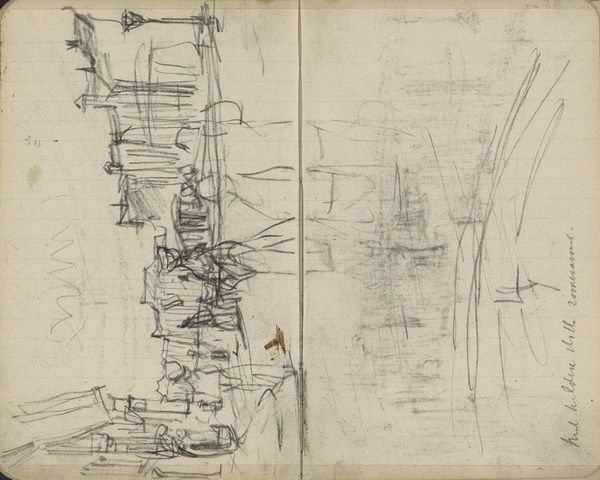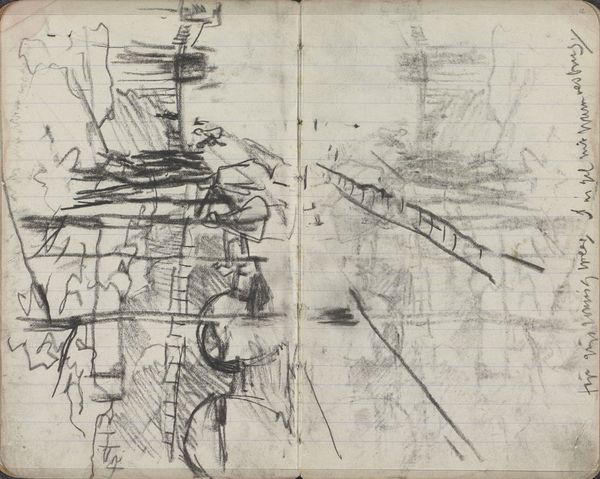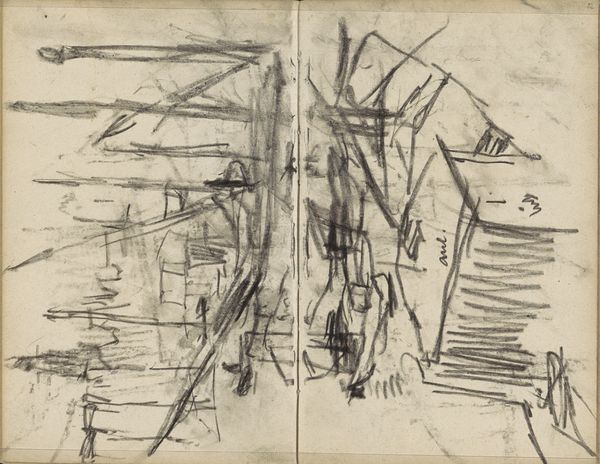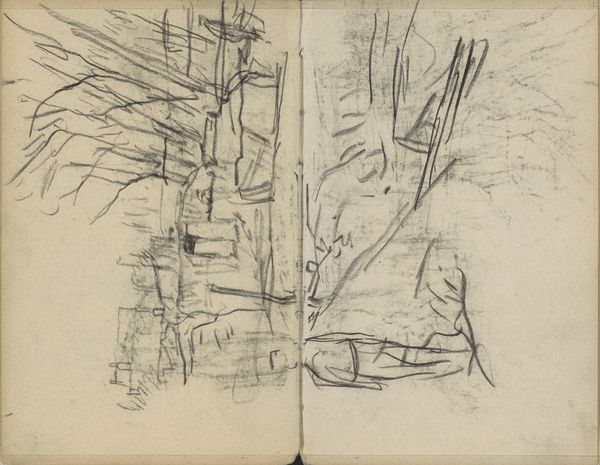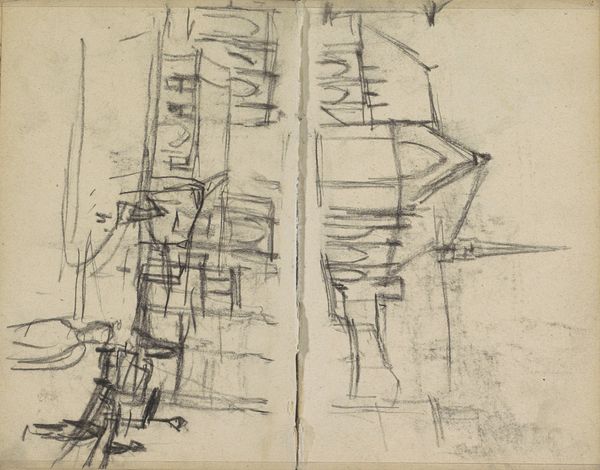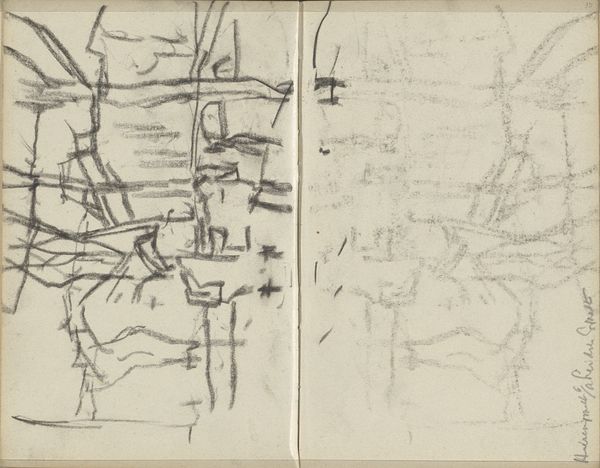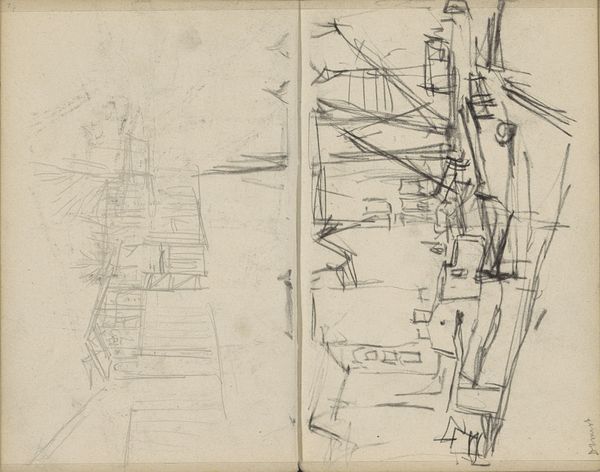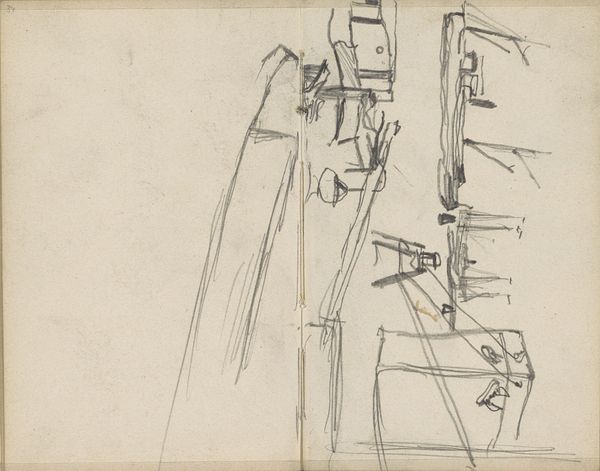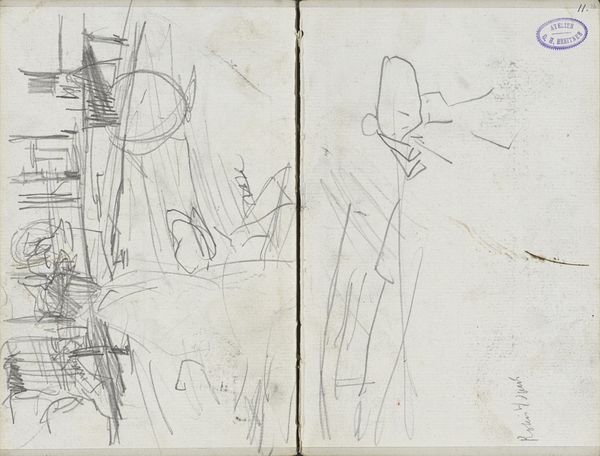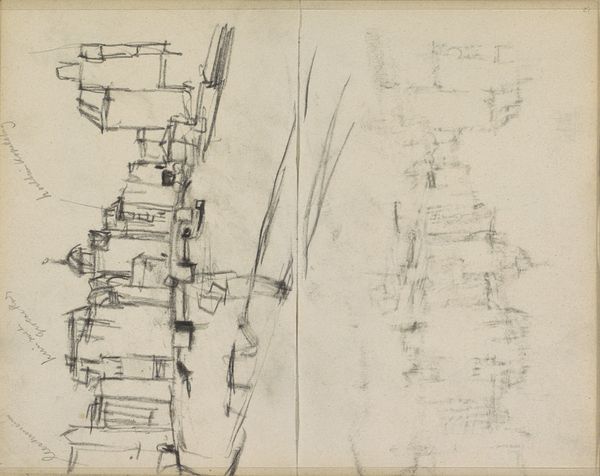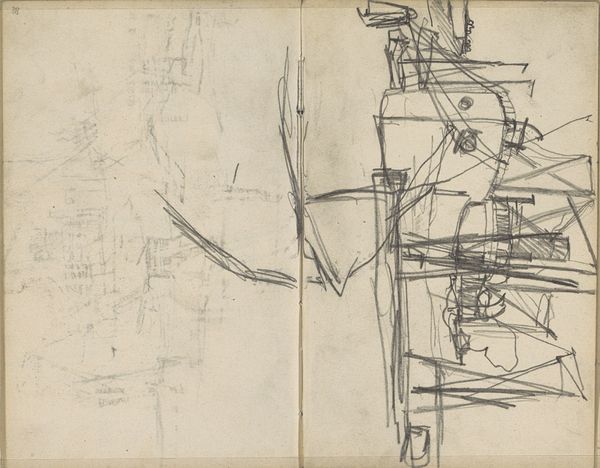
Aangemeerde schepen op het IJ ter hoogte van de Barentszkade in Amsterdam c. 1892 - 1923
0:00
0:00
georgehendrikbreitner
Rijksmuseum
Copyright: Rijks Museum: Open Domain
Curator: Breitner’s “Aangemeerde schepen op het IJ ter hoogte van de Barentszkade in Amsterdam,” dating roughly between 1892 and 1923. It’s a quick sketch in pencil and pen. Almost a glimpse into his mind at that moment, you know? Editor: Immediately, I'm struck by the sense of unfinished potential. There's a rawness, a vulnerability in seeing the artist's hand so directly, the process laid bare. It begs the question: what was the relationship between Breitner and the working waterfront he sketched, and whom did this labor ultimately benefit? Curator: Exactly! I see the ghost of the harbor. It’s like he was chasing a feeling, the essence of the light on the water, the rough textures of the boats…trying to nail it down before it floated away. And maybe before it changed due to what you mentioned, eh? Editor: Precisely. We're seeing the transformation of Amsterdam's harbor front through an impressionist lens. This sketch gives us pause. Amsterdam was becoming a nexus of global capitalism, with massive disparities of income, even at the turn of the century. We should ask, who profits and who struggles as the urban landscape evolves? Whose stories don't make it into the art? Curator: Ah, you're right. These docks...they probably represent a collision of worlds. On one hand, there’s beauty of labor, craftsmanship and then there’s probably exploitation. You can almost feel that tension in the scribbled lines! Editor: Right. While Breitner’s known for his impressionistic documentation of Amsterdam, often romanticized and focused on the aesthetics of urban life, we must remain aware that that perspective leaves significant social realities unexamined, obscured. How can we reconcile celebrating artistry while challenging the narratives it implicitly upholds? Curator: You've given me a new perspective on this quick sketch, for sure. I appreciate how it can remind us that everything exists within systems of power. I am sure that this would be so useful as we all think of the impact our work has as we walk around. Editor: It's through these layers of interpretation, engaging with history and social context, that we extract greater meaning. A beautiful picture, of course, but also an entry point to wider questions about work, class, and whose vision ultimately dominates how we view this moment.
Comments
No comments
Be the first to comment and join the conversation on the ultimate creative platform.

